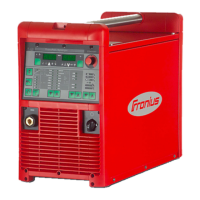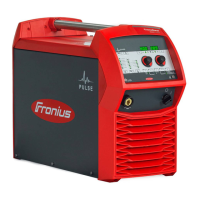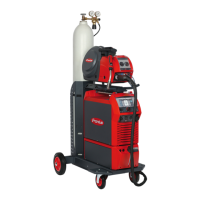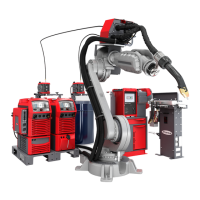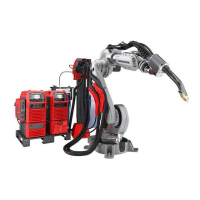10
It is not possible to provide a workplace-related emission value during welding (or cutting)
as this is influenced by both the process and the environment. All manner of different weld-
ing parameters come into play, including the welding process (MIG/MAG, TIG welding), the
type of power selected (DC or AC), the power range, the type of weld metal, the resonance
characteristics of the workpiece, the workplace environment, etc.
Danger from toxic
gases and va-
pours
The fumes produced during welding contain harmful gases and vapours.
Welding fumes contain substances that can cause cancer, as stated in Monograph 118 of
the International Agency for Research on Cancer.
Use at-source extraction and a room extraction system.
If necessary, use a welding torch with an integrated extraction device.
Keep your face away from welding fumes and gases.
Fumes and hazardous gases
- must not be breathed in
- must be extracted from the working area using appropriate methods.
Ensure an adequate supply of fresh air with a ventilation rate of at least 20 m³/hour.
Otherwise, a protective mask with an air supply must be worn.
Close the shielding gas cylinder valve or main gas supply if no welding is taking place.
If there is any doubt about whether the extraction capacity is sufficient, the measured toxic
emission values should be compared with the permissible limit values.
The following components are responsible, amongst other things, for the degree of toxicity
of welding fumes:
- Metals used for the workpiece
- Electrodes
- Coatings
- Cleaners, degreasers, etc.
The relevant material safety data sheets and manufacturer's specifications for the listed
components should therefore be studied carefully.
Flammable vapours (e.g. solvent fumes) should be kept away from the arc's radiation area.
Danger from fly-
ing sparks
Flying sparks may cause fires or explosions.
Never weld close to flammable materials.
Flammable materials must be at least 11 metres (36 ft. 1.07 in.) away from the arc, or al-
ternatively covered with an approved cover.
A suitable, tested fire extinguisher must be available and ready for use.
Sparks and pieces of hot metal may also get into adjacent areas through small gaps or
openings. Take appropriate precautions to prevent any danger of injury or fire.
Welding must not be performed in areas that are subject to fire or explosion or near sealed
tanks, vessels or pipes unless these have been prepared in accordance with the relevant
national and international standards.
Do not carry out welding on containers that are being or have been used to store gases,
propellants, mineral oils or similar products. Residues pose an explosive hazard.

